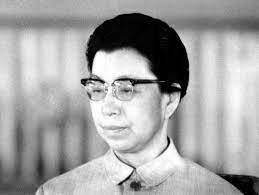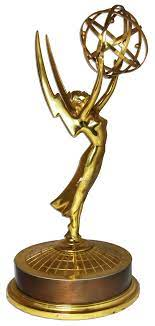World’s largest diamond found
On January 25, 1905, at the Premier Mine in Pretoria, South Africa, a 3,106-carat diamond is discovered during a routine inspection by the mine’s superintendent. Weighing 1.33 pounds, and christened the “Cullinan,” it was the largest diamond ever found.
Frederick Wells was 18 feet below the earth’s surface when he spotted a flash of starlight embedded in the wall just above him. His discovery was presented that same afternoon to Sir Thomas Cullinan, who owned the mine. Cullinan then sold the diamond to the Transvaal provincial government, which presented the stone to Britain’s King Edward VII as a birthday gift. Worried that the diamond might be stolen in transit from Africa to London, Edward arranged to send a phony diamond aboard a steamer ship loaded with detectives as a diversionary tactic. While the decoy slowly made its way from Africa on the ship, the Cullinan was sent to England in a plain box.
Edward entrusted the cutting of the Cullinan to Joseph Asscher, head of the Asscher Diamond Company of Amsterdam. Asscher, who had cut the famous Excelsior Diamond, a 971-carat diamond found in 1893, studied the stone for six months before attempting the cut. On his first attempt, the steel blade broke, with no effect on the diamond. On the second attempt, the diamond shattered exactly as planned; Asscher then supposedly fainted from nervous exhaustion.
The Cullinan was later cut into nine large stones and about 100 smaller ones, valued at millions of dollars all told. The largest stone is called the “Star of Africa I,” or “Cullinan I,” and at 530 carats, it is the largest-cut fine-quality colorless diamond in the world. The second largest stone, the “Star of Africa II” or “Cullinan II,” is 317 carats. Both of these stones, as well as the “Cullinan III,” are on display in the Tower of London with Britain’s other crown jewels; the Cullinan I is mounted in the British Sovereign’s Royal Scepter, while the Cullinan II sits in the Imperial State Crown.
SPORTS
1993
American becomes first non-Japanese to achieve highest rank in sumo wrestling
On January 25, 1993, American Chad Rowan becomes the first non-Japanese sumo wrestler to become a “yokozuna,” the sport's highest rank. Rowan, a 23-year-old Hawaii native who stands 6-foot-8 and weighs 455 pounds, is the 64th person to hold the top rank in sumo, Japan's national sport. Rowan, who went by his sumo name, Akebono, which means “Sunrise” or “Dawn,” was unnaturally tall for a sumo wrestler but extremely long and athletic. Despite only playing high school basketball his senior year, he earned a basketball scholarship to Hawaii Pacific University. However, he quit basketball and dropped out of college to pursue a career in sumo wrestling.
SPORTS
1924
First Winter Olympics
On January 25, 1924, the first Winter Olympics take off in style at Chamonix in the French Alps. Spectators were thrilled by the ski jump and bobsled as well as 12 other events involving a total of six sports.
ASIAN HISTORY
1981
Chairman Mao’s widow sentenced to death
Jiang Qing, the widow of Chinese leader Mao Zedong, is sentenced to death for her “counter-revolutionary crimes” during the Cultural Revolution. Originally an actress in Communist theater and film, her marriage to Mao in 1939 was widely criticized, as his third wife, Ho Zizhen.
COLD WAR
1995
Russia activates its nuclear command systems for the first time
Russia’s early-warning defense radar detects an unexpected missile launch near Norway, and Russian military command estimates the missile to be only minutes from impact on Moscow. Moments later, Russian President Boris Yeltsin, his defense minister, and his chief of staff were informed of the missile launch. The nuclear command systems switched to combat mode, and the nuclear suitcases carried by Yeltsin and his top commander were activated for the first time in the history of the Soviet-made weapons system.
CRIME
1971
Charles Manson and his followers convicted of murder
In Los Angeles, California, cult leader Charles Manson is convicted, along with followers Susan Atkins, Leslie Van Houten, and Patricia Krenwinkle, of the brutal 1969 murders of actress Sharon Tate and six others. In 1967, Manson, a lifetime criminal, was released from a federal penitentiary in Washington State and traveled to San Francisco, where he attracted a following among rebellious young women with troubled emotional lives. Manson established a cult based on his concept of “Helter Skelter”–an apocalyptic philosophy predicting that out of an imminent racial war in America would emerge five ruling angels: Manson, who would take on the role of Jesus Christ, and the four members of the Beatles. Manson convinced his followers that it would be necessary to murder celebrities in order to attract attention to the cult, and in 1969 they targeted Sharon Tate, a marginally successful actress who was married to Roman Polanski, a film director.
WORLD WAR II
1942
Thailand declares war on the United States and England
On January 25, 1942, Thailand, a Japanese puppet state, declares war on the Allies. When war broke out in Europe in September 1939, Thailand declared its neutrality, much to the distress of France and England. Both European nations had colonies surrounding Thailand and hoped Thailand would support the Allied effort and prevent Japanese encroachment on their Pacific territory. But Thailand began moving in the opposite direction, creating a “friendship” with Japan and adding to its school textbooks a futuristic map of Thailand with a “Greater Thailand” encroaching on Chinese territory.
U.S. PRESIDENTS
1961
President Kennedy holds first live television news conference
On January 25, 1961, President John F. Kennedy becomes the first U.S. president to hold a live televised news conference. From a podium in the State Department auditorium, Kennedy read a prepared statement regarding the famine in the Congo, the release of two American aviators from Russian custody and impending negotiations for an atomic test ban treaty. He then opened the floor for questions from reporters, answering queries on a variety of topics including relations with Cuba, voting rights and food aid to impoverished Americans.
ART, LITERATURE, AND FILM HISTORY
1980
Paul McCartney is released from a Tokyo jail and deported from Japan
Paul McCartney’s arrival at Tokyo’s Narita International Airport on January 16, 1980, marked his first visit to Japan since the Beatles tour of 1966. The occasion was a planned 11-city concert tour by his band Wings.
ART, LITERATURE, AND FILM HISTORY
1759
Scottish poet Robert Burns is born
Scottish poet Robert Burns is born on January 25, 1759. The day is still celebrated by Burns fans across the English-speaking world, with high-spirited “Robert Burns Night” feasts, featuring haggis and other Scottish delicacies, as well as enthusiastic drinking, toasting, and speechmaking. Burns, the son of a poor farmer, received little formal schooling but read extensively. A restless, dissatisfied spirit, he fell in love with a young woman named Jean Armour in the mid-1780s but refused to marry her when she became pregnant. The pair endured a legal struggle, at the end of which the courts declared Burns legally single-but he later married Armour anyway. Eventually, the couple had nine children, the last one born on the day of Burns’ funeral.
ART, LITERATURE, AND FILM HISTORY
1949
First Emmy Awards ceremony
The first Emmy Awards ceremony is held on January 25, 1949 at the Hollywood Athletic Club. The awards recognize excellence in television (which in the 1940s was a novel medium). Hollywood’s first television academy had been founded three years earlier by Sid Cassyd, a former film editor for Frank Capra who later worked as a grip at Paramount Studios and an entertainment journalist. At a time when only about 50,000 American households had TV sets, Cassyd saw the need for an organization that would foster productive discussion of the fledgling entertainment medium. The academy’s membership grew quickly, despite the lack of support from the Hollywood motion-picture establishment, which perhaps understandably felt threatened by TV and its potential to keep audiences entertained at home (and away from the theaters).
MIDDLE EASTERN HISTORY
1968
Israeli sub vanishes
The Israeli submarine Dakar, carrying 69 sailors, disappears on January 25, 1968 and remains missing for some 30 years. The Dakar was built at the height of World War II by H.M. Dockyard in Great Britain and commissioned as the HMS Totem by the British navy in 1943.
CRIME
2005
BTK killer sends message
On January 25, 2005, a Wichita, Kansas, television station receives a postcard from the BTK killer that leads police to discover a Post Toasties cereal box that had been altered to contain the letters BTK. This communication was one in a long line sent by the serial killer who terrorized Wichita for over 30 years, brutally murdering 10 people and taunting law enforcement and the local media. A month later, on February 25, Dennis Lynn Rader, a husband, father of two and compliance officer for Park City, Kansas, was taken into police custody and soon confessed to being the BTK killer.
AMERICAN REVOLUTION
1776
First national memorial is ordered by Congress
On January 25, 1776, the Continental Congress authorizes the first national Revolutionary War memorial in honor of Brigadier General Richard Montgomery, who had been killed during an assault on Quebec on December 31, 1775. Montgomery, along with Benedict Arnold, led a two-pronged invasion of Canada in late 1775. Before joining Arnold at Quebec, Montgomery successfully took Montreal. But the Patriot assault on Quebec failed, and Montgomery became one of the first generals of the American Revolution to lose his life on the battlefield.
WORLD WAR I
1919
Formal commission is established on the League of Nations
On January 25, 1919, in Paris, delegates to the peace conference formally approve the establishment of a commission on the League of Nations. U.S. President Woodrow Wilson insisted on chairing the commission—for him, the establishment of the League lay squarely at the center of the peace negotiations. He was supported by British Prime Minister David Lloyd George. Though France’s Georges Clemenceau was more skeptical, believing the peace with Germany to be the more important goal, he went along with his American and British colleagues, refusing to let France be seen as an obstacle to the League’s formation. The commission was originally made up of two representatives from each of the Big Five nations—France, the British empire, Italy, Japan and the United States. Later, after smaller nations such as Belgium protested, they were granted the right to nominate additional representatives, first five and eventually nine.















Comments
Post a Comment